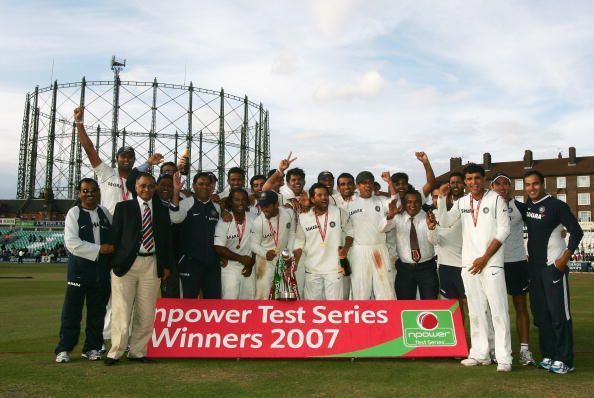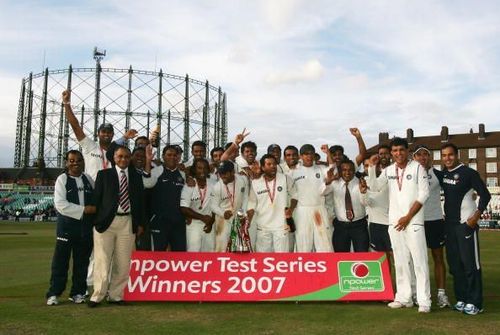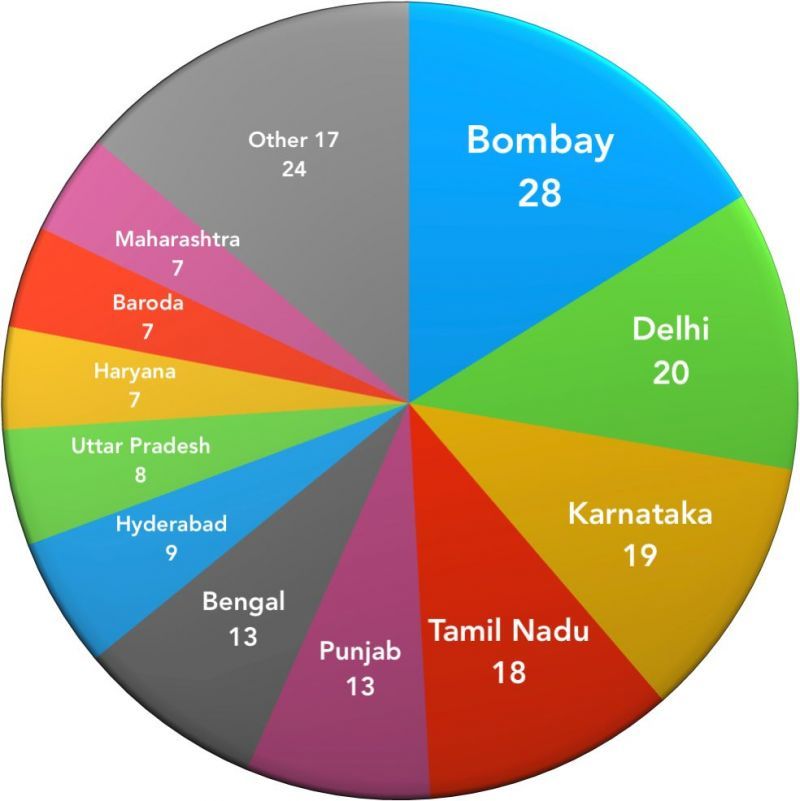
The last five decades: Changing dynamics of Test selections from Ranji teams

Indian Test cricket has evolved and how! Over the past few decades, the team has undergone several degrees of transformation, from being minnows to fighting underdogs. India has transitioned from being lions of their own backyards to being practically invincible at home and true contenders overseas. Given the notion that if cricket was an organized religion, it would probably be the majority in the country, it’s only fitting that India is in the top 3 of all three current formats of the game, with the top ranking in Tests and ODIs.
India has been ranked Number 1 in Tests for the past 18 months now, and while a lot of it can be attributed to thrashing teams at home, India has grown leaps and bounds in its approach towards overseas series also. In an era where test fixtures are dwindling by the day and Test cricket being branded boring and less rewarding, despite the cricketing calendar becoming more cramped, India’s improvement is all the more commendable. In a country where no sport pays the riches of cricket, the frenzy and excitement of ODIs and T20s has caught the fancy of the Indian audience also, but Test cricket still remains the most fundamental form of cricket for a lot of modern-day limited-over cricket legends.
Role of the Ranji Trophy
No conversation of India’s rise to the top of Test cricket can be considered holistic without due mention of Ranji cricket though. The Ranji Trophy has long been India’s lifeline and input source for Test cricketing talent. The grit, temperament, and patience needed to succeed in the longest form of International cricket has its roots firmly laid in domestic first-class cricket. Even today, despite the meteoric rise of cricketers via the IPL and Under-19 cricketing tournaments, it is still the Ranji Trophy that is a true testament to a player’s chances of survival and ascent in Test cricket. The Ranji Trophy has also evolved as international cricket has, and a closer statistical look at the Ranji Trophy highlights one extremely glaring phenomenon: the rising diversity and equitable mix with respect to selections from Ranji teams!
Back in the day when cricket was still considered a rich man's sport, and hockey was still the sport of the common man, cricket never experienced the scrutiny that it does today. Cricket was still the sport Maharajas used to play and selections had far greater political and dynastic implications than the presumed impact of a player on the field and the result, in an attempt to win. This changed post-independence and once cricket became the darling of sports followers in the country in the subsequent years.
A statistical analysis of selections via Ranji teams
What I have done here is taken every Indian Test player who has debuted in the last half century (from 1969 to the current date), and the Ranji team that the player last played for before earning his first cap, and applied some basic statistical analysis. The next half of this article essentially talks about the findings.
There has always been a murmur, chatter at times about the influence of Mumbai (Bombay) on Indian cricket and rightfully so. Whether political (cricket politics strictly), or captain’s/selectors’ whims and favoritism, whether financial standing or marketability of the Association and its players, the Mumbai Cricket Association has long been the cradle of the Indian cricket and it is substantiated by numbers. In the last half-century, the Mumbai Ranji team has paved the way for maximum selections to the national side. Out of the 173 capped players, Mumbai has contributed 28, followed by Delhi at 20, Karnataka at 19 and Tamil Nadu at 18. Bear in mind that there are 28 Ranji teams currently and 21 of them have led to at least 1 selection.

Changing dynamics
The impact that the top Ranji teams have had on the successes (and failures) of Indian Test teams cannot be understated, given how many of India's Test cricketers have been picked from these handful Ranji teams, but that trend has not stood the test of time. Growing dissipation of cricketing passion across the country, with improved facilities nationally and increase in the financial size of markets has led to an increased influx of Test selections from the smaller markets and Ranji teams outside the eternal powerhouses of Indian cricket.
The following chart illustrates the quantum of Ranji teams contributing to Test selections across decades.:

As you would notice, there has been an increase in the number of capped players from teams that had no presence in previous decades. Saurashtra for example, had one Test debutante from 1969-2008, it has added 3 since then. Uttar Pradesh had one debutant from 1969 to 1998, it has added 3 in 1999-2008 and another 4 in 2009-18.
What is also worth observing, is the trend line of the traditional powerhouses; the following table illustrates the domination (or now, the lack of), of the eternal powerhouses:

Mumbai which had 9 capped players from 1979 to 1988 has had only 2 players coming from its ranks since 2009. Delhi which had 9 capped players from 1999-2008 has had only 2 players selected to debut in Test cricket since 2009. While the more we dissect and do a further threadbare analysis, the initial findings are out there. Test cricket is changing and so is the contribution of Ranji cricket as an input source. With the era of specialists upon us, it becomes all the more critical to have the best and the most transparent selection process, and if India has to continue its domination of the sport, they have to continue moving in this direction where the selection is on the basis of (cricketing) class and not class!